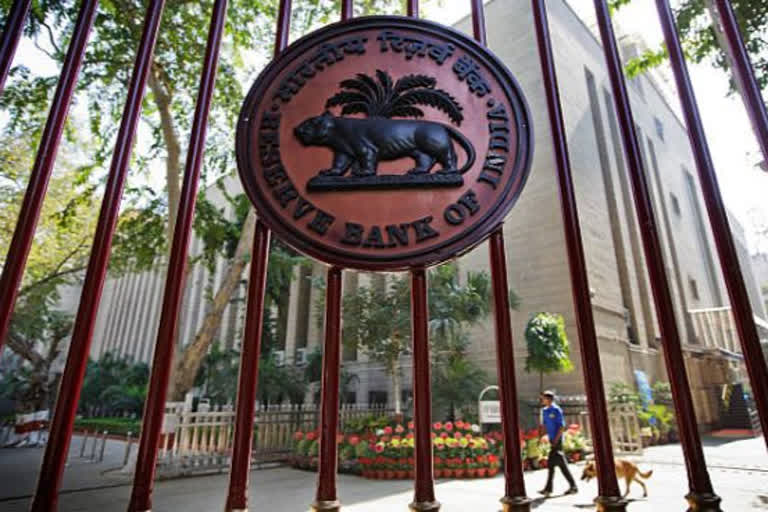Hyderabad: A vigilant central bank has been in action since the outbreak of the coronavirus (CoV19) pandemic through its liquidity windows. Now in its seventh bimonthly monetary policy review, continuing its accommodative stance, RBI unveiled monetary and regulatory measures to provide the much-needed relief to banks to fight the virus. The RBI measures are on expected lines with several innovations but with a pinch of conservatism.
Reduction of repo rate by 75 basis points has brought it down from 5.15 percent to 4.4 percent. There could be an auto transmission of lower lending rates that are already linked to the external benchmark rates. To that extent the transmission will happen and borrowers will get the much-needed relief.
Read more:Timely relief! RBI permits delayed EMI, interest payment as India battles COVID-19 outbreak
Articulating innovation, RBI has reset reverse repo rate cut at 4 percent. Accordingly, the existing policy rate corridor is increased from 50 bps to 65 bps. Under the new corridor, the reverse repo rate under the liquidity adjustment facility (LAF) would be 40 bps lower than the policy repo rate, as against existing 25 bps.
The marginal standing facility (MSF) rate would continue to be 25 bps above the policy repo rate. The move may increase the credit risk appetite of banks as the yield on funds placed with RBI under the reverse repo rates would henceforth come down.
Liquidity support measures:
In addition to the five long-term repo operations (LTROs) conducted between February 17 and March 18, 2020 for one-year and three-year tenors amounting to ₹1,25,000 crore to provide durable liquidity to banks at reasonable cost (fixed repo rate), RBI continued its mission mode of intervention to ensure seamless payment and settlement system.
Realizing further liquidity priorities and need of funds of the banking system where fresh deposit inflows could slow down due to the ongoing lockdown of the society, the percentage of cash reserve ratio (CRR), the amount of money banks have to place with RBI from deposits has been brought down from 4 percent to 3 percent releasing close to another Rs.1,37,000 crores of bank’s funds that can be diverted to increase lending to the ailing industry.
Even the percentage of marginal standing facility (MSF) wherein banks can borrow from RBI against securities held under statutory liquidity ratio (SLR) has been raised from 2 percent to 3 percent. It should add another Rs.1,37,000 crores of resources to the banks and taking the combined impact of all such measures, the widened liquidity to Rs. 3.74,000 crores to enable banks to lend more.
Relief to bank borrowers:
Taking a realistic and pragmatic view of ongoing crisis, all banks and non-banks can now grant a moratorium of three months on repayment schedule of existing loans. Effectively, borrowers suffering from the pandemic will be free from the pressure of paying equated monthly installments (EMIs) and can postpone their commitments.
Similarly, the interest on working capital limits can be deferred for three months on such facilities outstanding on March 1, 2020. This should relieve the industry from interest servicing pressure. The over dues in such loan facilities and postponement of scheduled installments will not be classified as non-performing assets (NPAs) giving relief to banks.
Such non-payment by borrowers will also not be downgrading their credit rating history to prevent it from impacting the risk based pricing metrics of banks in future that has the potentiality to raise lending rates if risk premium gets loaded.
Relief to banks:
Besides the relief in the asset classification norms arising from permitted relaxations in loan repayments and recasting of facilities, banks are allowed to postpone compliance to the enhanced prudential norms slated to be effective from April 1, 2020 to October 1, 2020. It includes compliance with enhanced net stable funding ratio (NSFR) where banks are required to maintain stable funding position.
Similarly, compliance to raise the level of capital conservation buffer (CCB) stands postponed from March 31, 2020 to September 30, 2020 providing reasonable elbowroom to banks to adjust to new prudential norms.
Analyzed from the situation arising from CoV19, the measures of RBI are well calibrated throwing several stiff challenges to banks in implementing them at the ground level, more importantly when the bank-customer connect is socially distanced. Banks can also activate their business continuity plans (BCP) to do the homework needed to implement them in collaboration with the RBI team drafted to work on its BCP to keep the financial system under its watch.
Hectic role of banks:
While working on the RBI dispensation, banks also need to muster enough resources to facilitate the direct benefit transfer (DBT) of financial benefits designed in the relief package of Rs. 1.7 trillion announced on March 26, 2020 to the socially deprived and vulnerable section suffering with the immediate impact of virus, more importantly in hinterland.
While RBI and government has carved out well tailored manifesto to provide relief to the broad section of the victims of the virus, the challenge for banks will be to carve out right methods to execute them mobilizing other resources. Thus the enhanced role of RBI and banks warrants joining them in the league of front line warriors of CoV19 that perhaps merits their inclusion in the insurance coverage.
(Article by Dr. K. Srinivasa Rao. The author is Adjunct Professor, Institute of Insurance and Risk Management – IIRM. Hyderabad. Views expressed above are his own.)


